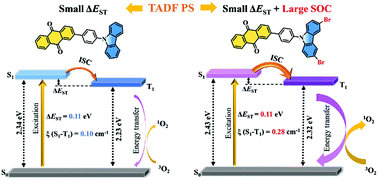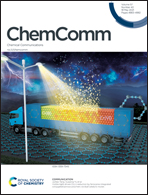Achieving high singlet-oxygen generation by applying the heavy-atom effect to thermally activated delayed fluorescent materials†
Abstract
A bromine-substituted thermally activated delayed fluorescent (TADF) molecule AQCzBr2 is designed with both small singlet–triplet splitting (ΔEST) and increased spin–orbit coupling (SOC) to boost intersystem crossing (ISC) for singlet oxygen generation. AQCzBr2 nanoparticles (NPs) demonstrate high productivity of singlet oxygen generation (ΦΔ = 0.91) which allows highly efficient photodynamic therapy toward cancer cells.



 Please wait while we load your content...
Please wait while we load your content...